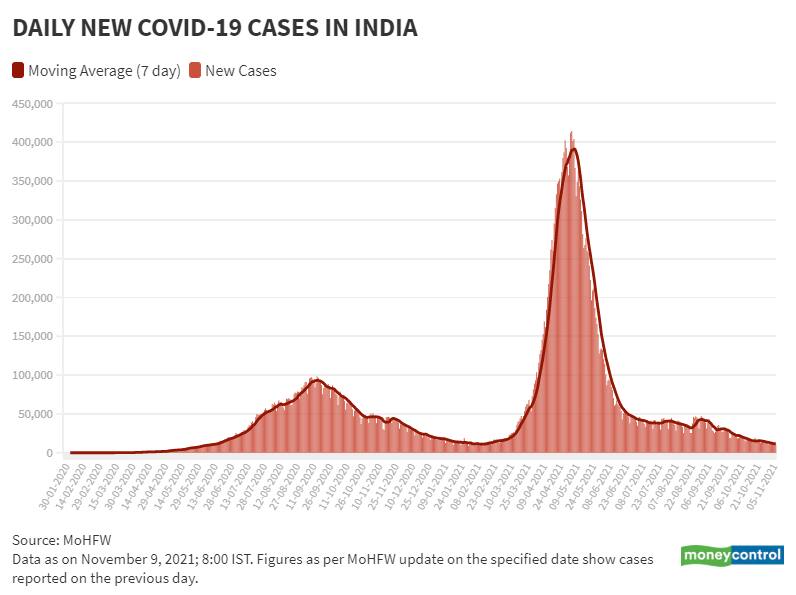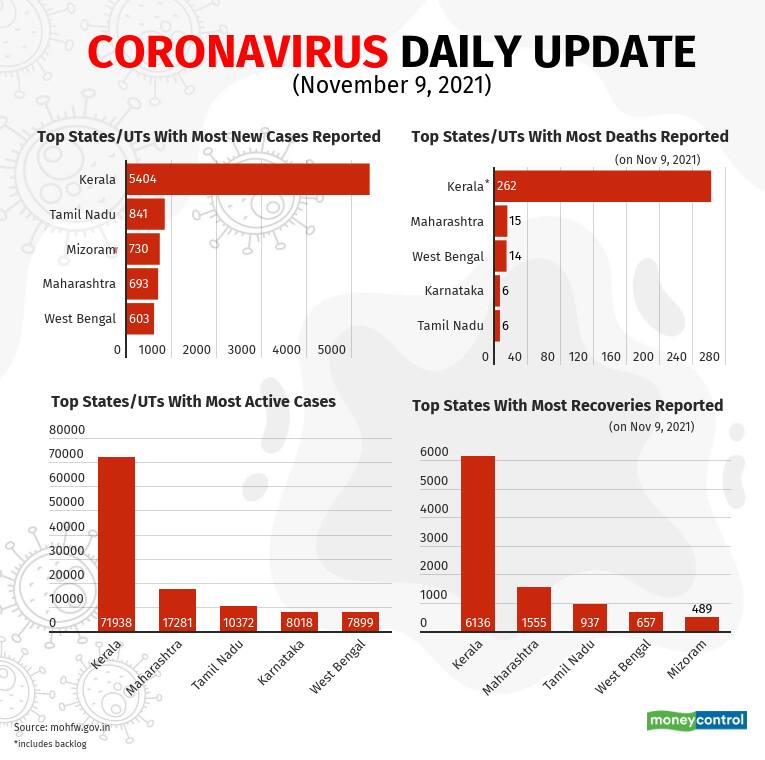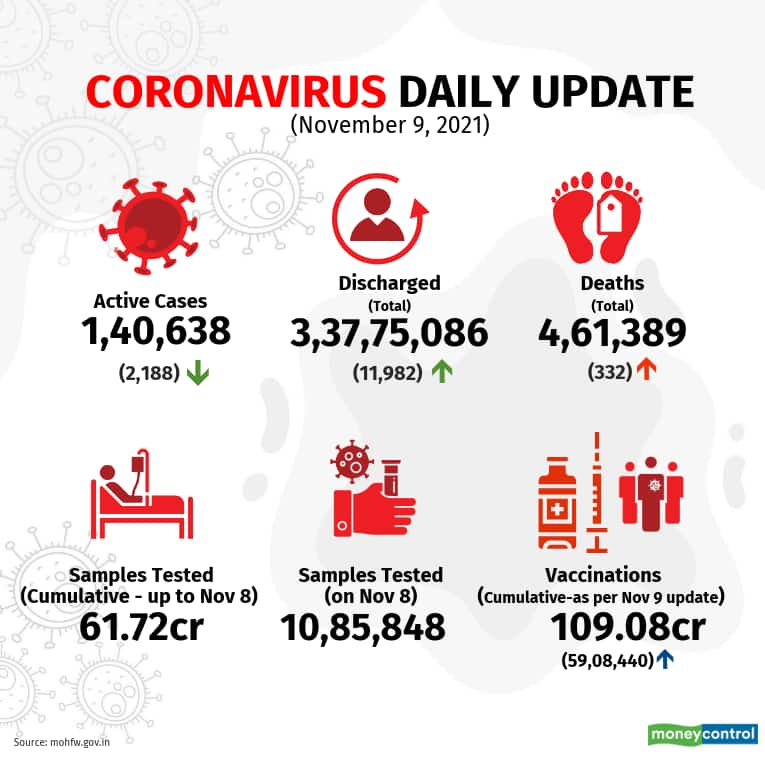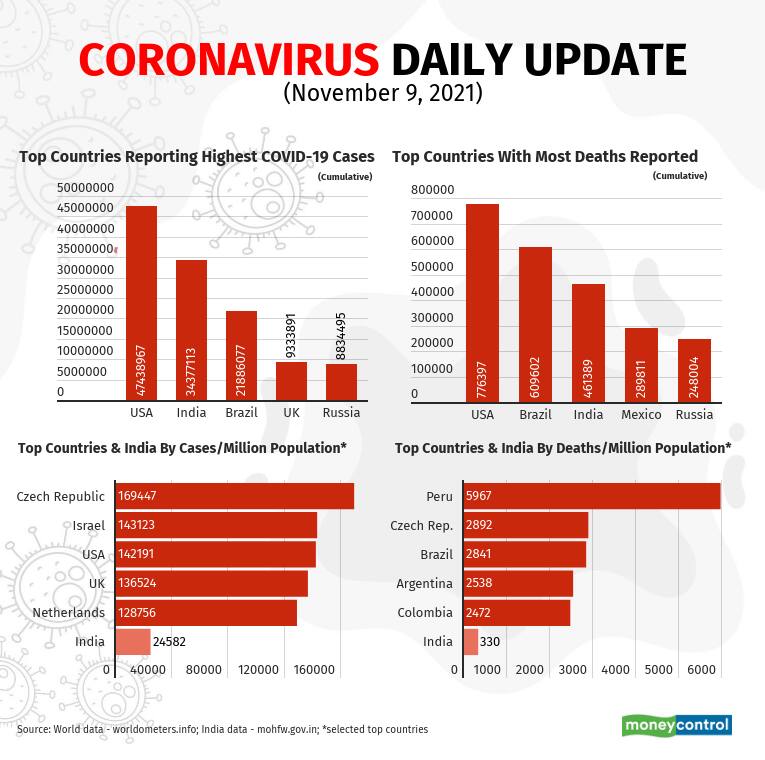Representative Image
India’s COVID-19 case tally is above 3.43 crore with 10,126 new cases reported (lowest in 266 days), as per the health ministry’s November 9 update. As many as 332 new deaths were reported in the last 24 hours with 11,982 new recoveries in the same period, the latest release showed.

India has 1,40,638 active cases (lowest in 263 days), down by 2,188 cases in 24 hours, as per the November 9 update. Kerala and Maharashtra account for nearly 63 percent of active cases in the country. Recovery rate currently at 98.25 percent; highest since March 2020.


More than 109.08 crore vaccinations have been administered across India, according to the November 9 update, with 59,08,440 new vaccination doses administered on November 8.

Of the total vaccinations administered to date, 68 percent are recipients of their first dose while 32 percent have received the second dose. Among states, Uttar Pradesh administered the most (cumulative) vaccine doses at 13.42 crore, followed by Maharashtra at 9.97 crore and West Bengal at 8.18 crore.
Daily positivity rate (0.93 percent) less than 2 percent for the last 36 days and weekly positivity rate (1.25 percent) less than 2 percent for the last 46 days.
